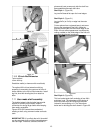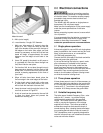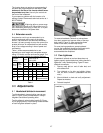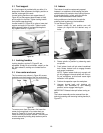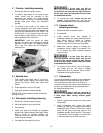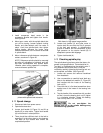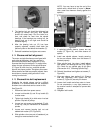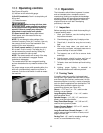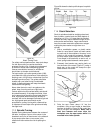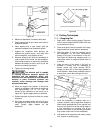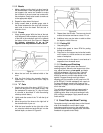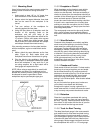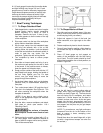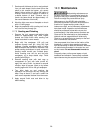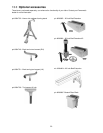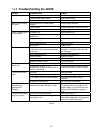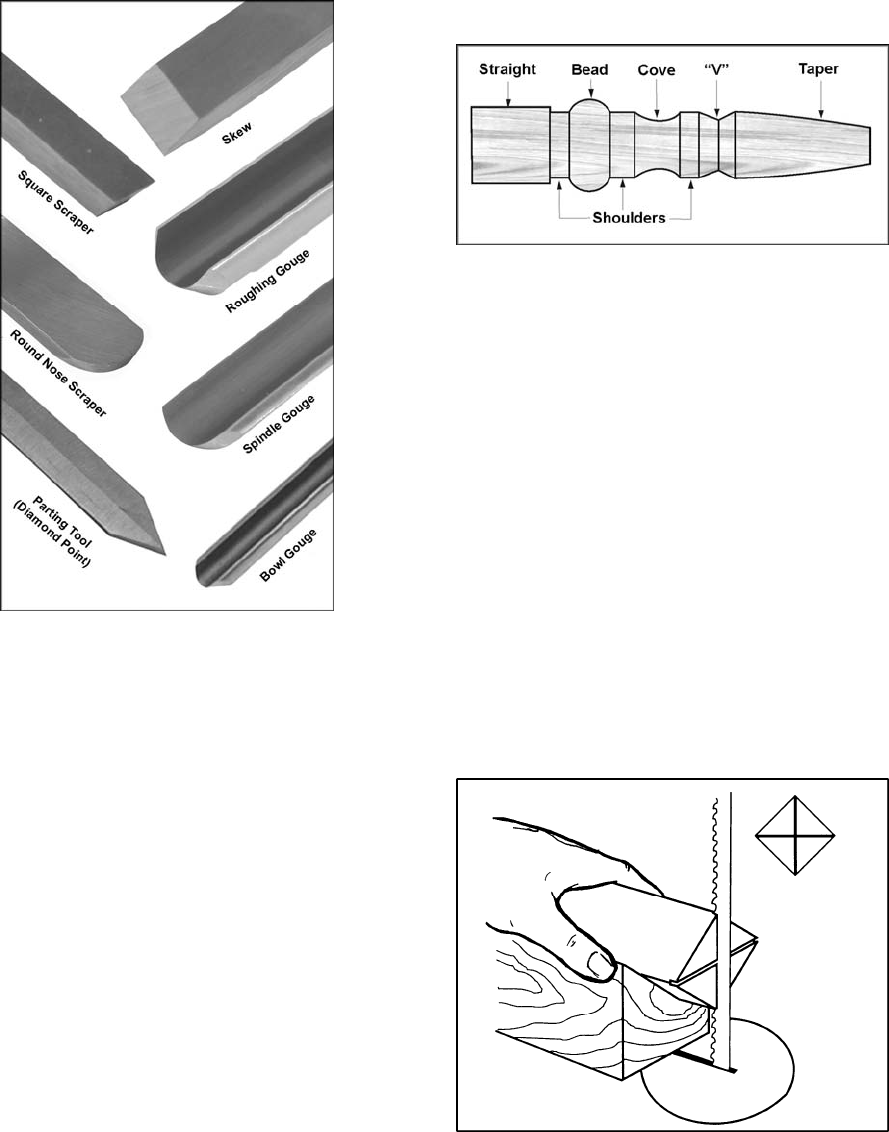
23
Figure 35
Basic Turning Tools
For safety and best performance, keep tools sharp.
If a tool stops cutting or requires excessive
pressure to make a cut, it needs to be sharpened.
A number of brand name sharpening jigs and
fixtures are available; however, a woodturner
should learn to sharpen tools freehand.
For best results, use a slow speed grinder (1800
rpm) fitted with a 60-grit aluminum oxide wheel (for
shaping) and a 100-grit alum. oxide wheel (for final
sharpening and touchup). The grinder should be
located near your lathe and at a comfortable
height. A diamond dresser will keep the wheels
true and eliminate glazing.
Never allow the tool to rest in one place on the
wheel, keep it moving and use a light touch.
Carbon steel tools can overheat easily and should
be cooled frequently. If the edge turns blue, it has
lost its temper and should be ground past the blue
area. High-speed steel tools are not as likely to
overheat, but can be damaged if allowed to get red
hot. High-speed steel tools should not be
quenched for cooling. Honing with a diamond lap
or slipstone will save trips to the grinder and keep
the edge fresh.
11.3 Spindle Turning
Spindle turning takes place between the centers of
the lathe. It requires a spur or drive center in the
headstock and a live or dead center in the tailstock.
A cup center rather than a cone center in the
tailstock will often reduce the risk of splitting the
stock.
Figure 36 shows the basic profile shapes in spindle
turning.
Figure 36
11.4 Stock Selection
Stock for spindles should be straight grained and
free of checks, cracks, knots and other defects. It
should be cut 1/8" to 1/4" larger than the finished
diameter and may require additional length so the
ends can be removed later. Larger stock should
have the corners removed to produce an octagon
making the piece easier to rough down to a
cylinder.
1. With a combination square, or plastic center
finder for round stock, locate and mark center
on each end of the workpiece. Accuracy is not
critical on full rounds but extremely important
on stock where square sections are to remain.
Put a dimple in the stock with an awl or nail, or
use a spring-loaded automatic center punch.
2. Extremely hard woods may require kerfs cut
into the ends of the stock (Figure 37) using a
band saw, so the wood will accept the spur
center and the live center.
Figure 37
3. Drive the spur center about 1/4” into the
workpiece, using a wood mallet or dead blow
hammer as shown in Figure 38. Be careful that
you do not split the workpiece. Never use a
steel face hammer and never drive the
workpiece onto the spur center while it is
mounted in the Lathe spindle.



